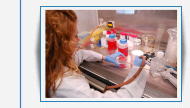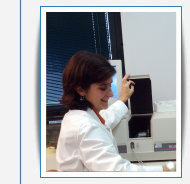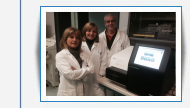RESEARCH
The first pathogenic mutation in human mitochondrial DNA (mtDNA) was identified in 1988. In the last 30 years research on mitochondrial diseases has developed rapidly and it is continuously evolving. More than 200 pathogenic mutations in mitochondrial DNA have now been described.
Several nuclear DNA-encoded proteins are component of, or control the oxidative phosphorylation (OXPHOS) e the proper functioning of mitochondria; mutations in the corresponding nuclear genes may cause mitochondrial disorders (see section “Classification of mitochondrial diseases”). The high clinical, biochemical and genetic heterogeneity of these pathologies makes each mitochondrial protein (estimated to be 1000-1500) a candidate cause of pathological phenotypes.
Through the past several years, basic and clinical researchers have been working together to form a “task force” to clarify the still many obscure aspects of the biology and pathology of mitochondria. In Europe there is a network of >50 research laboratories, including our own and covering different branches of research, actively working on the elucidation of the molecular, cellular and physiopathological mechanisms of mitochondrial diseases with the aim of identifying effective treatments.
Our most important programs cover different fields of research:
Thanks to National and International collaborations, necessary for research in the field of rare diseases, our Centre has identified the genetic cause of several human pathologies, caused by mutations in specific nuclear genes. As an example, we report here the main findings: SURF1 (Tiranti et al. 1998); ETHE1 (Tiranti et al. 2004); MPV17 (Spinazzola et al. 2006); TUFM (Valente et al. 2007); SDHAF1 (Ghezzi et al. 2009); FASTKD2 (Ghezzi et al. 2010); TTC19 (Ghezzi et al. 2011). All these studies were performed using classical approaches (linkage analysis, homozygosity mapping), which take long time for analysis and require large families, with multiple affected subjects, to be successful.
In the last years, the technological development of next generation DNA sequencing (NGS) and bioinformatics tools offer an affordable and highly informative approach for the analysis of coding regions of the human DNA, allowing the sequencing of a selected group of genes (gene panels) or all of them (whole exome). NGS targeted re-sequencing of known genes associated with mitochondrial disorders is a good compromise between feasibility (cost and time for analysis) and exhaustiveness of the study (see section “Diagnostics”). Conversely, whole exome sequencing allows the analysis of all the genes present in the nuclear DNA but cost, time and computational power required for WES analysis still hampered its use in routine genetic screening. Nowadays, our gene panels analyze 230 genes in a single run; the list of the genes is continuously updated through the constant revision of scientific publications.
In order to exploit the advantages of both techniques, in our Unit of Molecular Neurogenetics we have been using a combined, two-step strategy, based on targeted genes panel as a first NGS screening, followed by whole exome sequencing in still unsolved and more interesting cases.
The use of NGS technologies has greatly increased the rate of identification of new disease-genes for all the hereditary diseases. An additional advantage of NGS (in contrast to traditional genome-wide linkage analysis) is the possibility of applying these approaches to nuclear families or even singleton patients. In the last years, our group has been exploiting these approaches and has played a fundamental role in the identification of several disease genes, also thanks to collaborations with centers specialized in exome sequencing (Cambridge-UK; Muenchen-Germany).
The genetic analysis may lead to the identification of already published mutations or variants affecting known genes or novel candidate genes. For these variants, it is necessary a further step of functional validation, based on a series of experiments focused on demonstrating the biological consequences of the mutation and its causative role. Functional assays are performed on patients’ cells (fibroblasts of muscle cells) and on control cells with the aim of identifying biochemical, metabolic or structural abnormalities that can prove the association between the mutant genotype and the observed pathological phenotype. This is indispensable to discriminate pathogenic mutations (responsible for the disease) from DNA variants, called polymorphisms, which are responsible for the biological variability among human beings but are not causative of the disease.
In vivo and in vitro model are created and deeply studied, in order to obtain information about the physiological function of the studied proteins and about the alteration of cellular mechanisms due to its impairment. A better knowledge of the biological basis of mitochondrial diseases is the first step toward the identification of new therapeutic strategies.
Cells obtained from patients (mainly fibroblasts or muscle cells; see section “Diagnostics”) are an excellent “natural” model for the study of pathogenic mechanisms underpinning human disease.
In recent years, the group directed by Dr. Tiranti has accumulated experience in creation of a particular type of cellular model, called iPSc (inducible Pluripotent Stem cells), starting from fibroblasts. iPS cells are extremely versatile and can be “transformed” in vitro in different cell types (e.g. neurons, myocytes, cardiomyocytes…), which represent, for neurological and muscular pathologies, a more faithful cellular model compared to fibroblasts.
Finally, animal models of mitochondrial disorders, whose characterization is performed in collaboration with the Mitochondrial Biology Unit – MBU of Cambridge, represent the model system for the final evaluation of possible therapeutic approaches, based either on pharmacological treatments or gene therapy.
The research process starting from the discovery of the causative gene, continuing with the identification of the damaged cellular mechanism, and leading to the development of a therapy, is very long. The ETHE1 story is emblematic. In 2004, our Centre identified the gene ETHE1 as responsible for a severe early-onset metabolic disease, Ethylmalonic Encephalopathy, which affects the brain, the gastrointestinal tract and the small blood vessels. In 2009 we clarified the pathogenetic mechanism underpinning this disorder, which is due to defective mitochondrial catabolism of inorganic sulfur. The absence or malfunctioning of the ETHE1 protein causes an accumulation of sulfuric acid (H2S) in different tissues, which is toxic for several enzymatic activities including cytochrome c oxidase (COX) and short chain acyl coA dehydrogenase (SCAD). The elucidation of this pathogenic mechanism allowed us to test in animal models therapeutic approaches (metronidazole and N-acetyl cysteine) based on the reduction or buffering of H2S accumulation; positive results obtained in the mouse model supported the administration of these drugs in some patients, confirming their benefic effects (2010).
Further information about the pathogenic mechanisms underpinning Ethylmalonic Encephalopathy, obtained in vitro and in vivo, then led to hypothesize liver transplantation as possible treatment. This approach was done in 2016 on a baby girl, with promising results.
Our Center for the study of Mitochondrial Disorders is dedicated to answering all open questions in this field. We are actively working in the development of rapid and efficient molecular tests, mainly based on the use of high-throughput platform for mutational screening. This objective is part of a trans-national collaborative effort to improve and wide the diagnostic offer to patients and families. A similar technological implementation will concern the use of new instruments able to measure the biochemical respiratory profile of cells in culture. Our Centre intends to implement the offer of an integrated diagnostic approach to mitochondrial disorders, which include the most comprehensive molecular and biochemical analysis using innovative technologies. As concerning experimental therapy a consistent part of our research has been re-oriented in the evaluation of therapeutic approaches in diseases affecting the mitochondrial respiratory chain. This is now possible because several animal and cellular models have been developed and can be used as a proof of principle to test the efficacy of treatments. Recent observations indicate that novel therapeutic approaches are now available and exploitable in the field of mitochondrial disorders, including gene therapy, pharmacological treatments, and rehabilitative option.
"Research projects with the participation of staff of the Mariani Foundation Center for the Study of Pediatric Mitochondrial Diseases "

Making DNA bank

Cultured fibroblasts and cellular disease models

Biochemical dosages of mitochondrial enzymes on tissues and cells

Next generation DNA sequencing (NGS)


